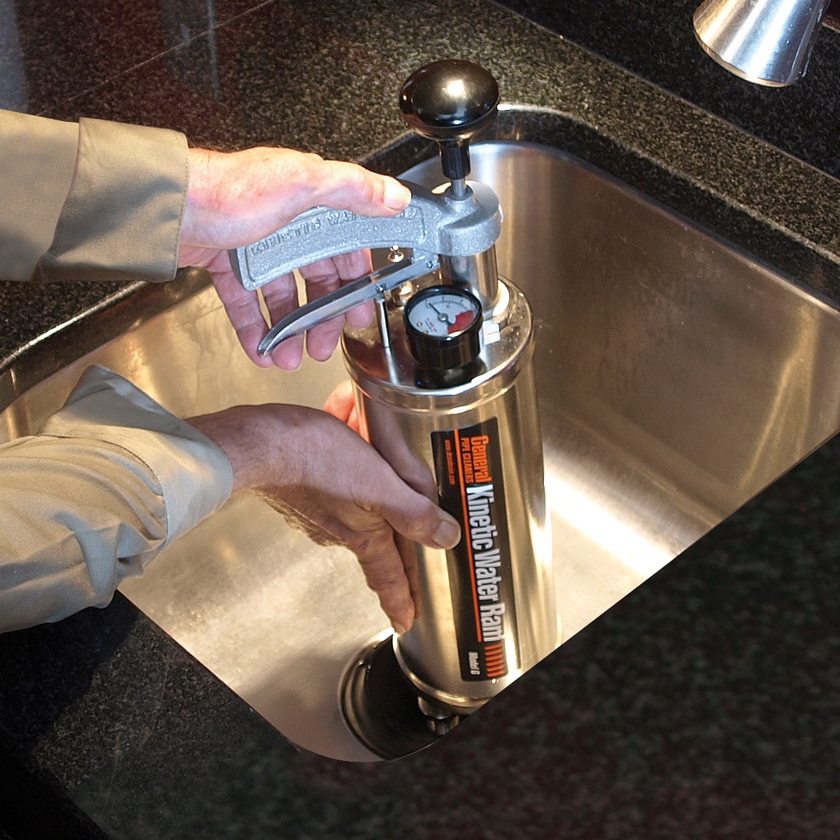Q: Over the years, we’ve accumulated a number of drain cleaning tools. I’m not sure what drain cleaning problem each tool is best suited for. Is there a list to guide me?
A: Good question. If you use a drain cleaning tool in the wrong application, it won’t clear the drain properly, and you could damage the machine, or worse, injure yourself. Here’s a list of clogged drain problems, and the recommended drain cleaning tools for each.
Sink or laundry drains:
A hand-held drain cleaner with a 1/4” or 5/16” cable is the right tool for this application. The snake has the right flexibility for small drain lines with lots of bends. It is best to remove the trap under the sink first. Be careful there are no chemicals in the drain. The acids in these liquids can destroy your tools quickly. Start with a small cutter like the arrow head to get the water flowing, then follow up with a U-cutter or side cutter to scrape the pipe walls clean.
Toilets:
The best tool for a clogged toilet is a closet auger. Much more reliable than a plunger, the snake is flexible enough to get around the trap, yet strong enough to do the job. You can either dislodge the stoppage, or retrieve objects like diapers and children’s toys that are frequently the cause of toilet clogs. Be sure to use a professional grade closet auger that has the durability you require.
Slow draining tubs and showers:
The best tool for this is not a snake, but rather a Water Ram. Snakes have a hard time getting through the drum trap under a tub. The Water Ram uses compressed air to create a shock wave that simply follows the path of the water. Think of it as a really powerful plunger. There’s no pressure build-up so it won’t harm pipes.
Watch for more solutions to clogged drain problems next month.
To download a free Tool Selection Guide, visit our website. To ask a question, email [email protected].
